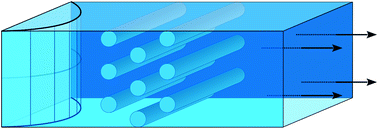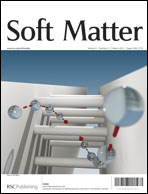Computer simulations of colloidal particles under flow in microfluidic channels
Abstract
We study the propagation of single, neutrally buoyant rigid spheres under pressure-driven flow by means of extensive computer simulations that correctly account for hydrodynamic interactions. We first consider a system geometry consisting of two parallel plane walls and achieve very good agreement with experimental results [M. E. Staben and R. H. Davis, Int. J. Multiphase Flow, 2005, 31, 529]. In the second part of our analysis, we simulate the flow of


 Please wait while we load your content...
Please wait while we load your content...